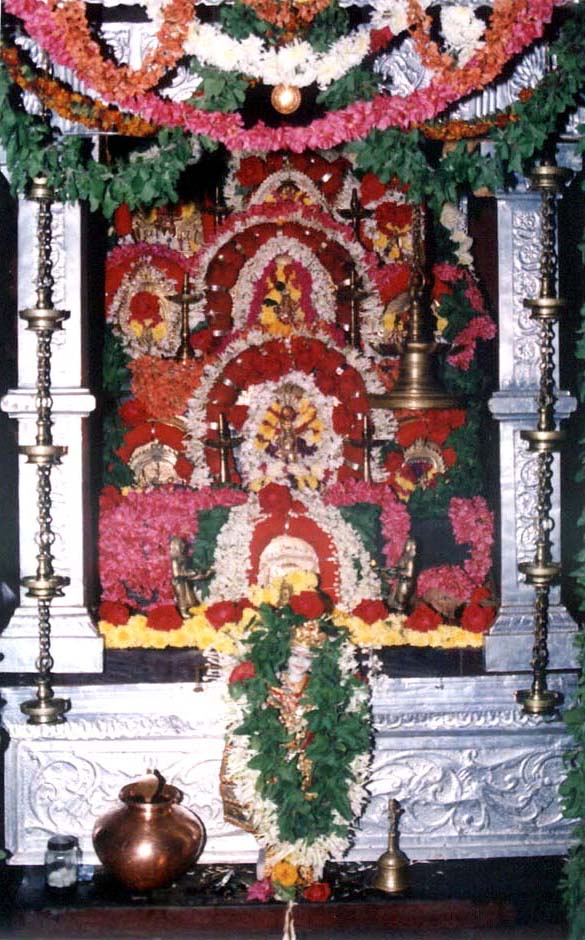
GOKULASHTAMY VRITHA
Some 375 years ago, our ancestors were blessed by Revered Sri Ramavallabh Das and since then the Gokulashtamy Vritha is being followed meticulously as per the diction laid down by the revered Saint.
The legend has it that one of our ancestors probably late Sri Gopalaiah, was worried as his male children were dying at an early age. He was advised to seek guidance and blessings from revered saint Sri Sri Ramavallabh Das. Miraculously his male progeny lived on and thus he was obliged to perform Gokulashtamy Vritha with all sincerity, a legacy which has been carried forwards by his worthy sons, grandsons and great grandsons to this day.
The Vrith commences on Shuddha Panchami by tying Dolara, a wooden Mantap in which one of the idols of Lord Krishna is placed for pooja. Ashtamy Bhajan singing commences from this day (Bhajans) . However, Grahastas join on Bahula Padya, the day after Upakarma. On this day there will be regular Punyaha, Ghata Sthapana, Vrith Dharana by the person who wishes to perform vritha. Exquisite idols of Lord Krishna are brought out ceremoniously from the Garbhagudi and placed in another large main Mantapa in the main hall. Gokulashtami ) From this day regular Ashtamy program commences. Which includes, Geetha Parayana, Maha pooja in the afternoon. Then in the evening Bhajans composed in chaste Marathi and set to beautiful ragas, by the revered Master and his disciples, are sung.

( Photo of main Mantap where idols are
decked up for pooja.To see details of idols please click
The Bhajans are rendered in three
or four sets. The singing ritual commences from Nitya niyama,
followed by Vaara Niyama, especially on Mondays, Wednesdays and Fridays.
Dolara Bhajans are sung till Bahula Panchami, on which day the
Dolara visarjan takes place. On Ekadashi there are some special
Bhajans, and of course, on Ashtamy the Janmakatha is sung after the regular
bhajans. After singing the Nityaniyama and Navavidha
Bhakti, the Vrith Dhari, also known as Malamudradhikari in some temples, is
obliged to stand and sing. During this period they stop the regular bhajans and
move towards the Main Mantapa to render Guruseva. This is an occasion for any
singer who visits the shrine during Astamy to offer his seva to the Guru. Any
other person in the congregation may also sing.
( Seen here are Sri Ramesh Hattiangadi,
DHIKSHADHIKARI, and famous Accordion player Sri Nihar Amembal.)
Ekadashi niyama is usually followed by
'invasion' of Balasantha, during which enterprising youngsters dress up,
for some light entertainment.(Balasantha ) This is followed by regular
Deevatiga Seva Bhajans and Maha Mangalarathi.
(For more Photos please click
Balasantha ) Deevatiga Seva is the penultimate seva
every day. On Bahula Padya the Vratadhikari offers Deevatiga seva with just one
Deevatiga. Then the number goes on increasing, so on day two there would be two
deevatigas, on day five there would be five deevatigas and so on. Finally on day
9, Dwadashi, there would be Nine Deevatigas,
(Deevatiga ) .
After observing Mahagondol, these Deevatigas
will be put off ceremoniously amidst Mangala Vadya and JaiJaikar,
early in the morning to coincide with the day break. Religious programs like
Harikatha, Bhajans, Yakshagana are performed to assist in Jagaran on the night
of Dwadashi.
(( Fore more Photos please click
Deevatiga ) On Triodashi, at about 10.00 AM, the mandali
aggregates once again to perform Okuli. The even will commence with singing of
Okuli (Okuli ) Bhajan. After
the Bhajan the younger flock dance a bit to the Dolaak rhythm, followed by a
traditional Ball Game. Then the Vrithadhikari replays the legendry Breaking of
the Curd pot. This event is then followed by the Okuli bath. The devotees
visit other temples near by and finally have a refreshing dip in the cool waters
of Varahi river. Then there will be pooja and Arthi to all the samadhis of
Sri Sri Gopal Das, and Sri
Sri Gangadhar Das, whose Samadhis are in Shri Goplakrishna
Temple, and to samadhi of Sri Sri Umavallabh Das in Shri Shankarnarayana
Temple.
( Fore more Photos please click
Okuli
)
On Chaturdashi the idols of Lord Krishna are
taken back to Garbhagruha, and this marks the end of almost a month long
Gokulashtamy vratha. NEW ADDITIONS
The Garbagraha door has now been decorated
with artistically embossed high quality Brass sheets.
The Door depicts Hari-Hara tatva,Trishula-Damaru and Shanka-Chakra.
The work simmers like Gold
New mantap designed by Sri Subraya Londe of Mala, near Karkala, is made of Jack wood. It can be easily dismantled for covering it with Embossed Silver sheets and storing after Ashtamy vritha. 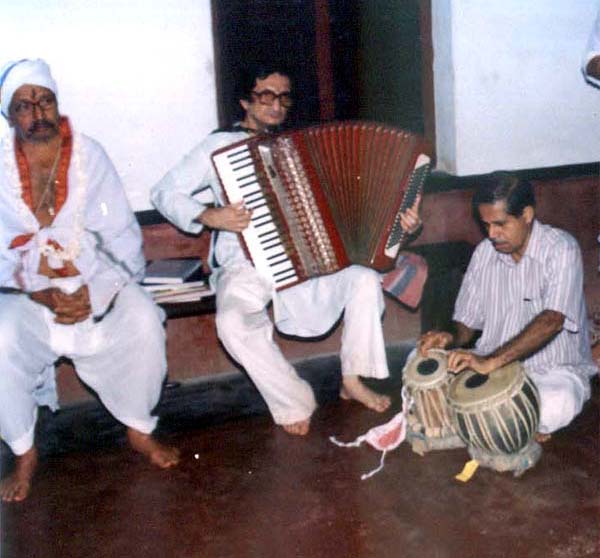
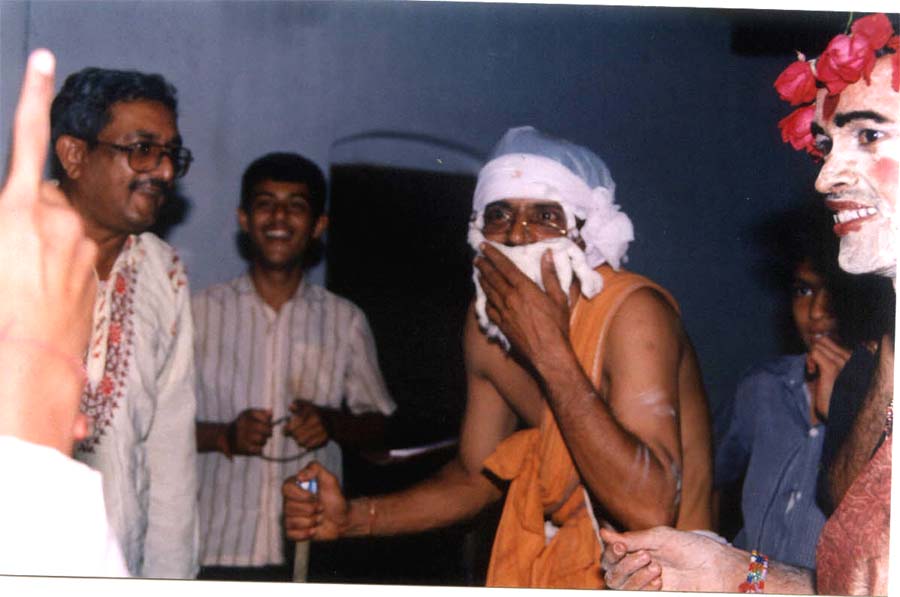
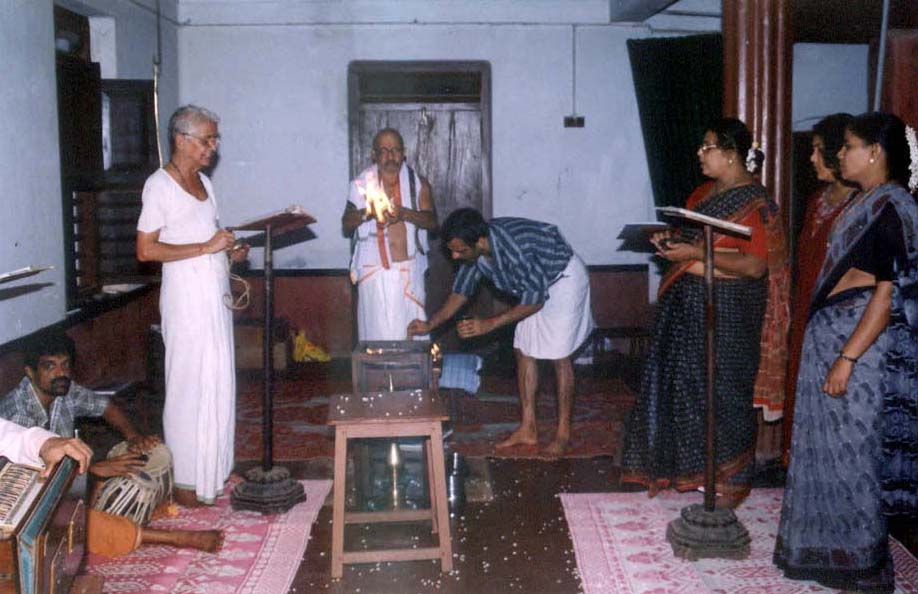
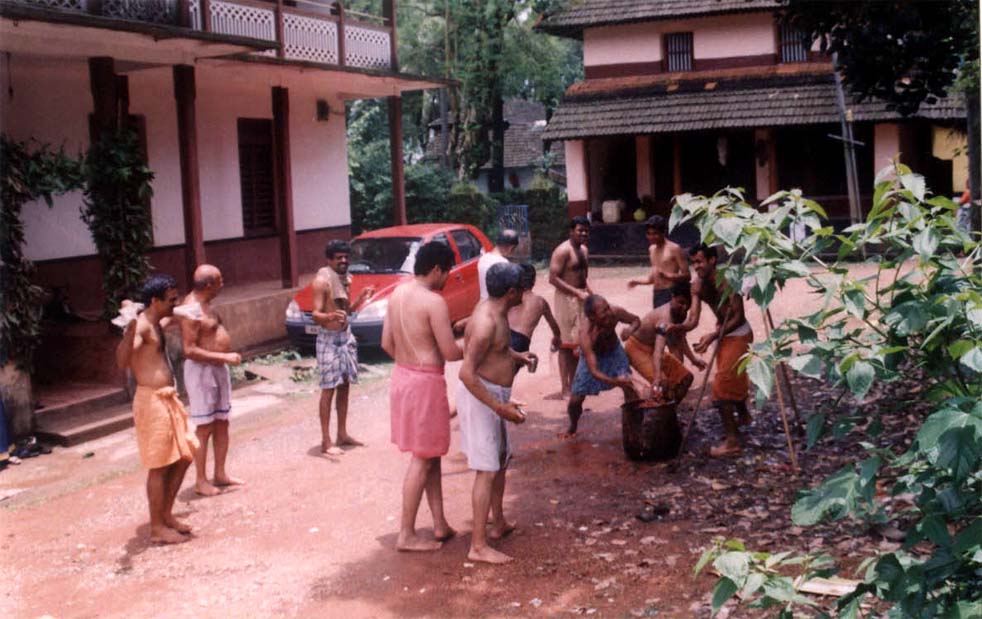
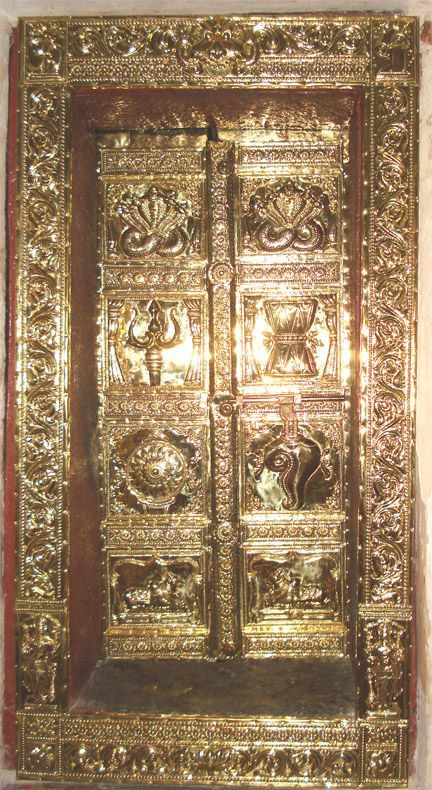
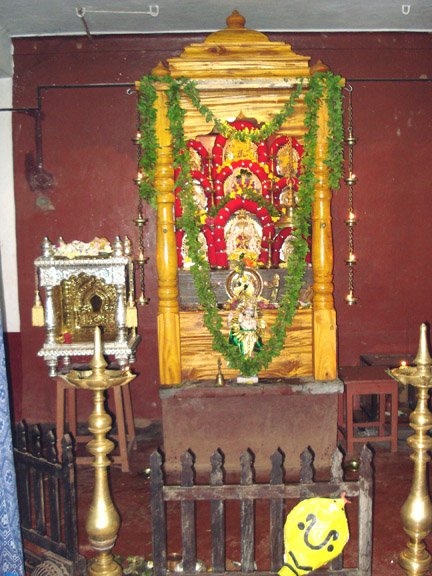
Free Hit Counter